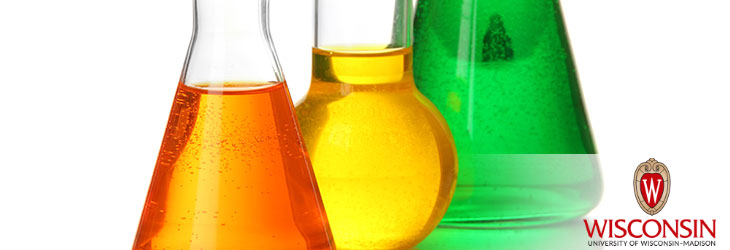Materials & Chemicals

Microcellular Foamed Plastics with Reduced Cost and Improved Surface Quality
WARF: P110013US01
Inventors: Lih-Sheng Turng, Jun Peng
The Wisconsin Alumni Research Foundation (WARF) is seeking commercial partners interested in developing an improved method of fabricating foamed, injection-molded components.
Overview
Microcellular injection molding is a process that produces lightweight and dimensionally stable plastic components while using fewer raw materials than standard injection molding techniques. The process, also known as “microcellular foaming,” proceeds by introducing a supercritical fluid into a liquid polymer prior to injecting the polymer into a mold. The polymer solidifies in the mold to form a desired component with complex geometry. The supercritical fluid causes tiny bubbles to be distributed throughout the molded component. As a result of the bubbles, less raw material is necessary to mold the component while dimensional stability of the component is improved as bubble growth compensates for the material shrinkage.
Conventional microcellular foaming techniques require specialized equipment and supercritical fluids, which increase the price of the technique. In addition, the surfaces of components fabricated using conventional techniques tend to be irregular or rough. A need exists for an improved method to create foamed plastics without expensive equipment or supercritical agents.
Conventional microcellular foaming techniques require specialized equipment and supercritical fluids, which increase the price of the technique. In addition, the surfaces of components fabricated using conventional techniques tend to be irregular or rough. A need exists for an improved method to create foamed plastics without expensive equipment or supercritical agents.
The Invention
UW–Madison researchers have developed a method for fabricating injection molded components with higher quality and lower cost than conventional techniques. The method uses a liquid such as water combined with a nucleating agent such as commonly used additives or fillers to generate bubbles. The liquid is added into a hopper of an injection molding machine and combined with the nucleating agent. The liquid turns into a vapor during injection, which forms bubbles within the injection molded components. The nucleating agent acts to reduce bubble size and increase bubble density, resulting in finer surface quality in the molded parts. The method allows production of foamed plastic parts with a comparable weight reduction and similar mechanical properties as conventional microcellular foaming techniques with improved surface finish and reduced cost.
Applications
- Microcellular injection molded plastic components
Key Benefits
- Produces parts of comparable quality without use of supercritical agents
- Improves dimensional stability
- Eliminates need for expensive machinery
- Allows production using standard injection molding machinery
- Provides superior surface finish quality
- Reduces costs associated with equipment, supercritical agents and raw material
- Reduces ongoing operation costs
Stage of Development
The development of this technology was supported by WARF Accelerator. WARF Accelerator selects WARF's most commercially promising technologies and provides expert assistance and funding to enable achievement of commercially significant milestones. WARF believes that these technologies are especially attractive opportunities for licensing.
Tech Fields
For current licensing status, please contact Michael Carey at [javascript protected email address] or 608-960-9867